Advertising Types in eReading/Tablet Context – Embedded Campaign Sites
Embedded campaign sites in the tablet/eReading context are website-like advertisements that are created around certain products or services. They differ in content and functionalities. Where static print advertisements in tablets/eReading devices are mainly electronic copies of physical magazine print advertisements, embedded campaign sites, in turn, are whole advertising sites embedded into electronic magazines and newspapers. Yet, inside these ads there are different advertising elements that are common both in print and online advertising. These elements include, for instance:
- Texts: Text sections utilize both advertising-like copywriting texts and product- or service-specific information texts. Often it is exactly the copywrite text that aims at catching the reader’s attention on the front page of the ad; product or service specific information is usually placed in sub-sites in the ad that open on top of the page from the main page’s menu.
- Photos: It is possible to utilize various options with regard to images. Especially, these options are useful with regard to embedded campaign sites where the size of the ad is not static but, rather, builds on sub-sites. In addition to front page images, it is possible to add product catalogs (Figure 34) or different brand image photos (Figure 32) to the sites.
- Videos: Videos may be commercials or demonstrations where product or service characteristics are being explored through animated images and sound.
- Touchable Content: Embedded campaign sites have been also utilizing touchable screens of devices by offering a 360 degree product images (Figure 35). Instead of letting readers click the images in a traditional manner, the sites have enabled a more creative way of “twiddling” the product.
- Social Media Linking: Several embedded campaign sites have been utilizing social media in a distinct way. Often this means linkages to company’s or brand’s Facebook or Twitter page (Figures 32, 33, 34, 36). It appears that linkages to social media platforms are created mainly to get readers to become followers for the company or brand in diverse media. In some cases, it is also possible to share ads or content to other social media platforms via specific social media sharing tools (Figure 36).
- User-Generated-Content: Users can leave comments to embedded campaign sites. For instance, a user can take part in discussions within advertising pages and, hence, interact with other users (Figure 37).
- E-Commerce: The tablet/eReading medium has enabled a clear innovation in advertising; purchasing inside magazine ads. It seems that U.S. advertisers have been knowledgeable about the potential of e-commerce inside tablet media and, thus, taken advantage of it by offering readers with the purchasing option of products (see Figures 31, 32, 33, 34, 35, 37). Very often company’s own e-shop opens on top of an ad enabling a more user-friendly way of interacting with the offering. It is also possible to close this layer conveniently with a single click. On the other hand, it is also possible that readers are being automatically directed to an e-shop based on a single click. Herein, readers leave the magazine application and need to manually navigate back to the magazine after having browsed the e-shop.
- Lead Generation: When it comes to more complex products (such as cars) or services (such as customized professional services), embedded e-commerce logic is not utilized but, rather, companies take advantage of “call-to-action” in lead generation. In terms of readers, this means submitting one’s contact information so that representatives of the advertising company may contact the reader in future.
Embedded campaign sites are being implemented in two ways: 1) either there’s a full-page advertisement (i.e. embedded campaign site) between editorial pages that the reader comes across while browsing the magazine, or 2) there is an ad banner among editorial content via which the layer-based campaign site opens.
In the following chapter, some benchmark examples of embedded campaign sites in tablet/eReading medium context are presented:
The Verizon ad (Figure 31) in The Daily magazine entails a front page and three sub-pages. The main page includes an embedded commercial video whereas sub-pages offer additional information about the product’s technical characteristics. This whole page ad has been placed between editorial pages.
The Sperry ad (Figure 32) in Elle magazine resembles traditional print ad but entails web functionalities. For instance, right in the front page there’s a scrollable photo gallery. Additionally, the page has distinct clickable links to the brand’s e-shop and social media platforms (Facebook and Twitter).
Another Verizon ad (Figure 33), in turn, entails many of the same elements as the former one (see Figure 31). This ad highlights purchasing option to a great extent both in main page and sub-pages. There’s also a linkage to the company’s Facebook page.
The Macy’s ad in The Daily magazine utilizes in its embedded campaign site various functionalities: video, up-to-date online product catalog, social media, e-shop, and linkage to iTunes, through which readers can download the company’s mobile application.
The Verizon mobile phone ad (Figure 35), in turn, applies a scrollable 360 degree image technique. When a reader turns the product around, the ad communicates back to the reader with additional information about the product. Thus, a reader gets different information depending on the angle from which the product is watched. Also, the product can be purchased through the company’s e-shop that opens on top of the page.
In an advertising page for Moneyball movie (Figure 36) offers people with the option of watching a trailer from the film and browsing an image gallery. Also, the page takes advantage of social media sharing tools to a great extent.
The embedded campaign site for a novel book, The Passage (Figure 37), has been customized for tablet/eReading devices. It resembles the book’s official website greatly (actually, seems to be an identical version of it) and, thus, offers various online functionalities. This ad has been seamlessly embedded between the editorial pages in the newspaper.
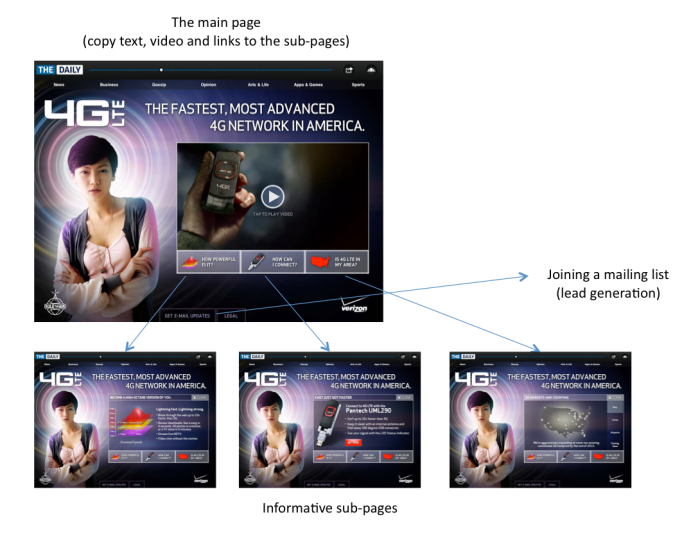
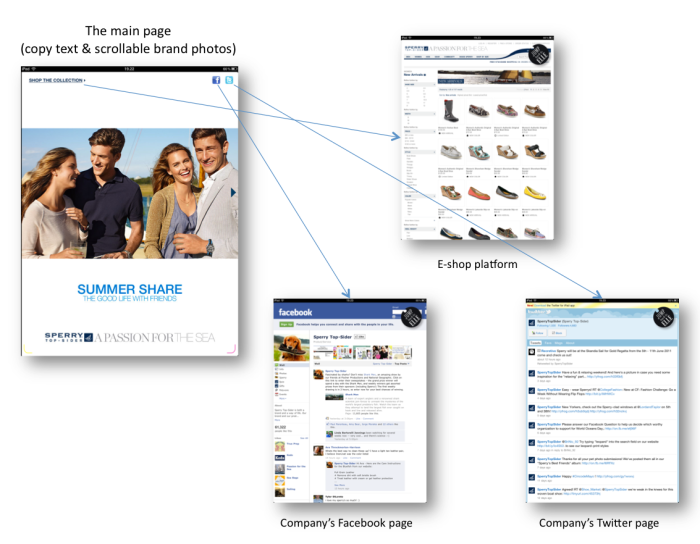
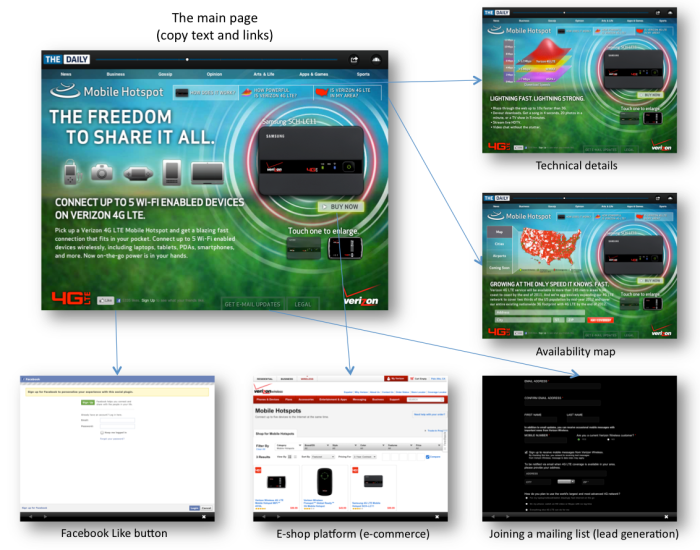
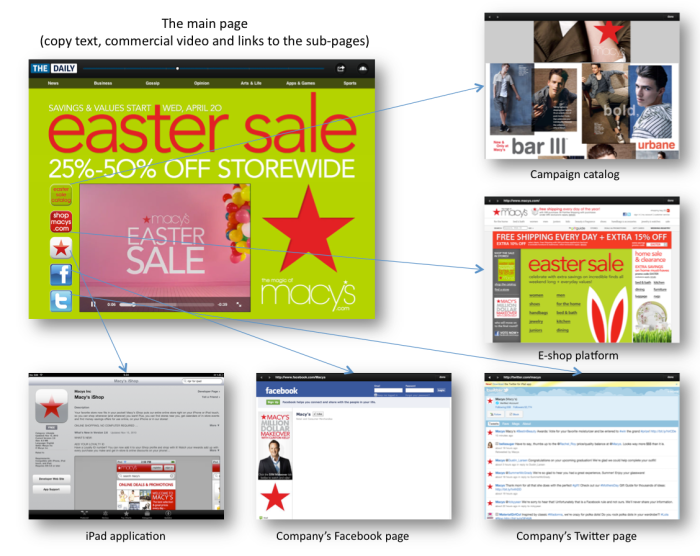

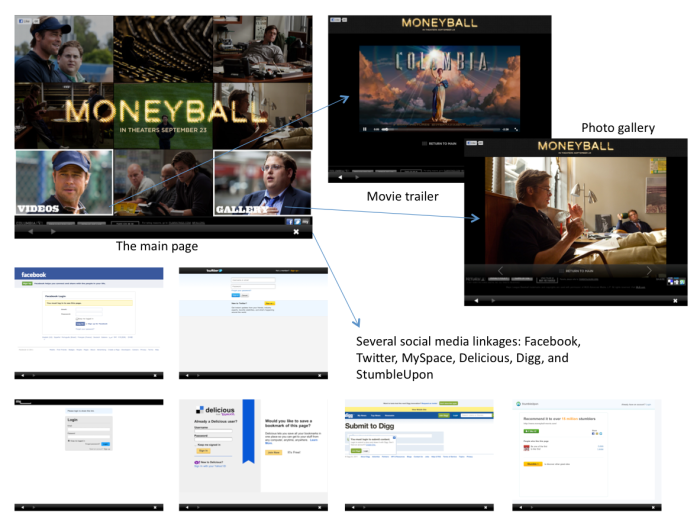
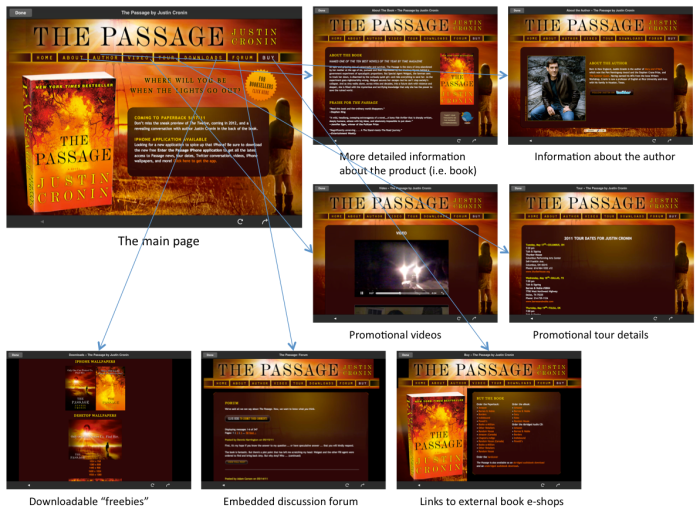
Leave a comment